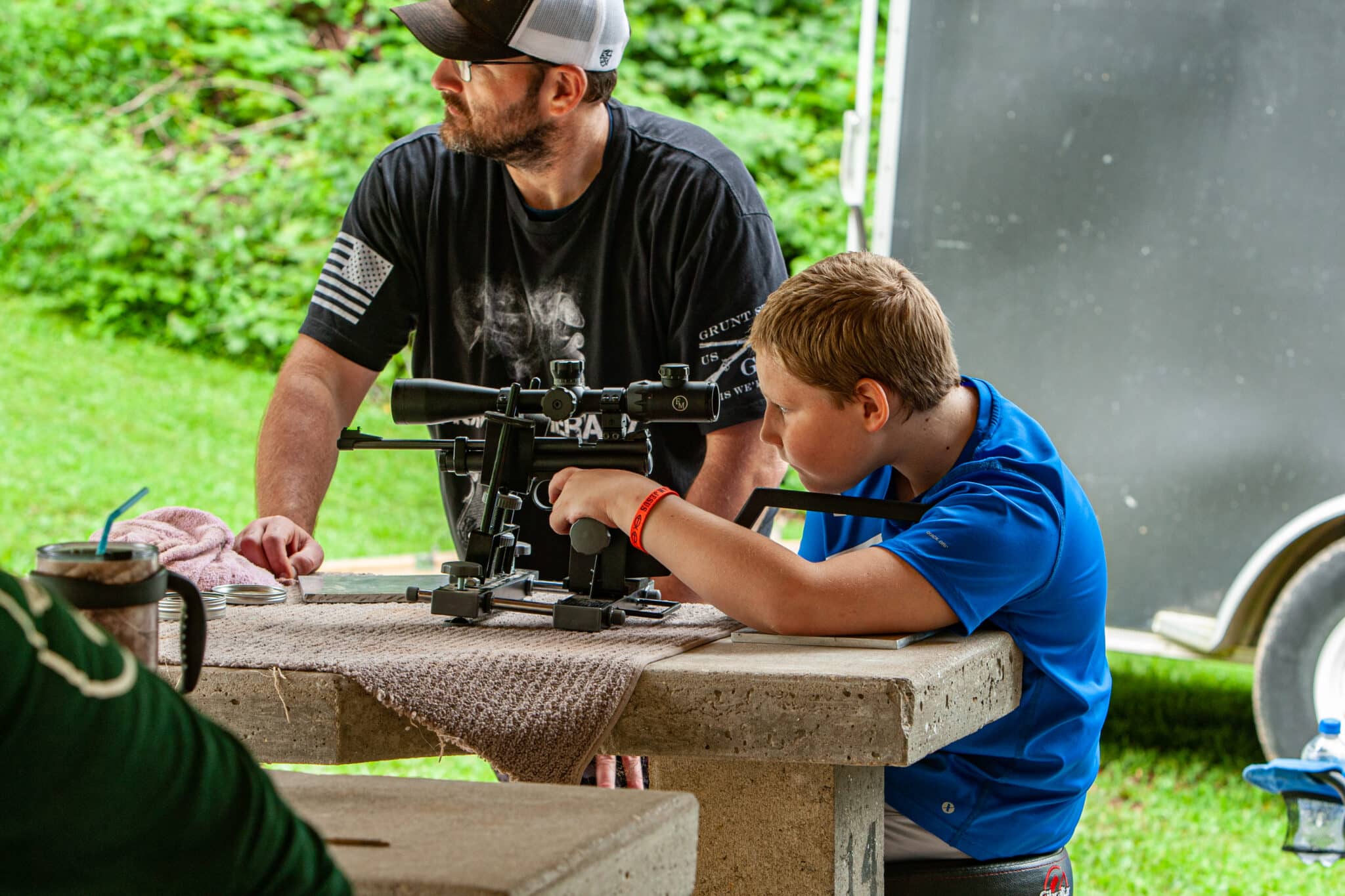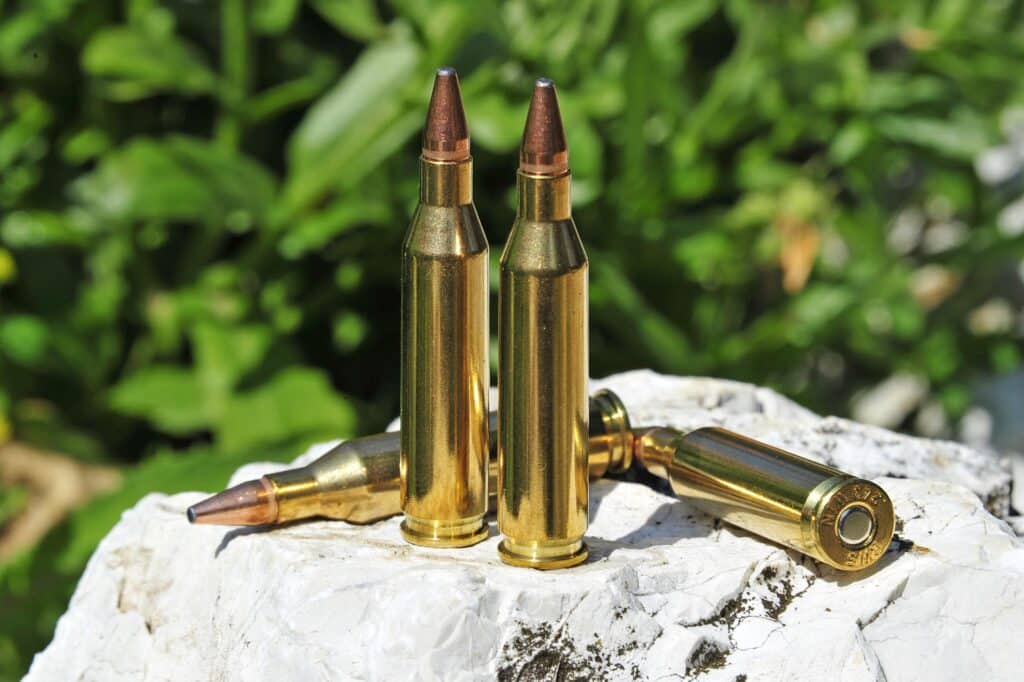Boddington’s Cartridge Review
By Craig Boddington,B&C Professional Member Excerpt from Fall 2014 issue of Fair Chase
Through the first half of the 20th century the .243-inch bullet diameter was a rare bird in the United States. Until 1955 the only American cartridge in this bullet diameter was the 6mm Lee Navy, chambered in the Lee straight-pull bolt action. A few sporting rifles were so chambered and the cartridge lingered until 1935 but is pretty much long forgotten. The 6mm fared a bit better in the British gun trade. In the 1920s, Holland and Holland introduced both a belted and rimmed version of the .240 H&H Magnum, and about the same time the .242 Rimless Nitro Express and rimmed .246 Purdey made an appearance. All were virtually unknown in the United States. Likewise more than a half-dozen European 6mms were introduced between 1895 and the 1920s.
Considering the poor track record of the caliber, it seems a bit odd that in 1955 both Winchester and Remington introduced 6mm cartridges: the .243 Winchester and .244 Remington. The Winchester cartridge was created by necking down the 3-year-old .308 Winchester case. Remington’s entry used the old (1892) 7×57 Mauser case (also the basis for the .257 Roberts) and is actually based on a wildcat developed by Fred Huntington.
The obvious difference is that the .244 has a longer case, 2.233 inches compared to the short 2.045-inch case of the .243. This means that the .244 has somewhat greater case capacity, so it will always be capable of a bit more velocity than the .243 Winchester. The .243, on the other hand, will fit into short actions. Short bolt actions didn’t exist in 1955, but the .243 was introduced in the bolt-action Model 70 and lever-action Model 88 and quickly adapted to the Savage 99 lever-action. The .244 couldn’t fit these then-popular lever guns, but Americans loved their velocity. On the surface, then, it seems the Remington cartridge should have been the winner.
Maybe, except Remington made a fundamental mistake in visualizing the utility of their new cartridge. They saw it as a long-range varmint cartridge, offering 75 and 90-grain loads and barreling their rifles with a 1:12-inch twist, which was too slow to stabilize heavier bullets. Winchester viewed their .243 as a combination varmint and big game cartridge, offering 80 and 100-grain bullets and barreling their rifles with a faster 1:10-inch twist. Obviously Winchester won. The .243 was an instant and lasting success, while the .244 floundered. In 1963 Remington surrendered, renaming the cartridge the 6mm Remington, offering a 100-grain load, and changing the twist to 1:9 inches.
If you want to split technical hairs, and if you don’t care about the ability to fit into a shorter action, then the 6mm Remington is probably a slightly better cartridge than the .243. But the damage was done nearly 60 years ago and can never be undone. The .243 Winchester is popular the world over, both for varmints and smaller big game. No other 6mm cartridge has ever come remotely close to its worldwide appeal. The .240 Weatherby Magnum is considerably faster, but has never expanded beyond the Weatherby line. The .243 Winchester Super Short Magnum, though a bit faster, died an incredibly early death. It was unable to make even the slightest inroad into the .243 Win- chester’s popularity.
Today the most common .243 loads remain an 80-grain bullet at 3,350 feet per second and a 100-grain bullet at 2,960. However, factory loads from certain companies are also available in 55, 58, 70, 75, 85, 87, 90, and 95 grains; component bullets fill in the gaps and run on up to 105 grains. Generally speaking, bullets from 90 grains and upwards are intended for big game, while bullets below 90 grains are designed for more rapid expansion on varmints. In both arenas the .243 Winchester is a true superstar. Accuracy is usually good and often great across the entire spectrum. Long-range varminters often use the .243 with bullets in the 80-grain range because they hold up in wind so much better than the .22 centerfires, but the incredibly fast and explosive bullets from 55 grains into the 70s are truly amazing. Winchester Supreme’s 55-grain Ballistic Silvertip load is rated at 3,910 fps, but in a 26-inch-barrel varminter, I get chronograph readings well over 4,000 fps.
Although the .243 is a popular varmint cartridge, it’s probably more popular among big game hunters. Accurate, light in recoil, and easy to shoot, since inception it has been a standard “first big game cartridge” for millions of youngsters. It was, in fact, the cartridge I used to take my own first big game animal, a pronghorn, back in 1965. It is a sound choice for beginners, but I am no longer certain it’s the best option. A beginner’s cartridge must have minimal recoil, but today I lean more toward cartridges with a bit more bullet weight and frontal area: .260 Remington, 6.5mm Creedmoor, 7mm-08 Remington.
That said, the .243 certainly isn’t a bad choice for beginners. It’s also a pretty good choice for seasoned veterans because it is so accurate and easy to shoot well. The misunderstood thing about it is that it is not a long-range cartridge. Depending on the load and bullet design, energy drops below 1,000 foot-pounds somewhere short of or just at the 400-yard line. On deer-sized game this is asking a lot of a 6mm bullet, but if ranges are kept maybe a hundred yards shorter, the .243 Winchester is incredibly effective on pronghorns and small to medium-sized deer. Without question it is fully adequate for any North American deer, especially within 250 yards, and thus equally adequate for our sheep and goats.
Clearly there are limits. The .243 accounts for a lot of elk every season, and I’ve seen it used effectively for black bear. Especially with the great modern bullets we have today, it will get the job done—provided steady hands, good presentation, and ideal shot placement. No matter what I say, some hunters will use the .243 for elk and other large North American game, and if they’re careful it will come out okay. However, the .243 is not an elk rifle, is not a moose rifle, nor a bear rifle.
It is, as Winchester intended it in 1955, a wonderful combination varmint/big game round. But it’s important to read “big game” as meaning “deer-sized big game.” That’s perfectly okay, because deer-sized big game covers perhaps 90 percent of North American hunting. On deer-sized big game, it shoots flat enough and hits hard enough to cover at least 90 percent of North Ameri- can hunting conditions. It’s a cartridge chambered by every rifle manufacturer and loaded by every ammunition manufacturer with a rich supply of component bullets from every maker—and now, a 60-year legacy of great reloading recipes.
While the cartridge is dual-purpose for varmints and big game, not all .243s are. Some are heavy-barreled monsters, designed for maximum stability but not so easy to carry around. These fall to the varmint side of the equation. Others are pencil-barreled, extremely light, and wonderful to carry, but even in .243 produce too much recoil (and heat up too fast) for sustained use in a prairie dog town. Most .243s, however, genuinely are dual purpose. In the winter you can use them to cull bobcats and coyotes. In the spring and summer you can hone your skills sniping prairie dogs and ‘chucks, and when fall comes around, you can use them to tag your pronghorn, mulie, or whitetail. But please, don’t take your .243 to the moose meadows or into the high alpine for elk!







